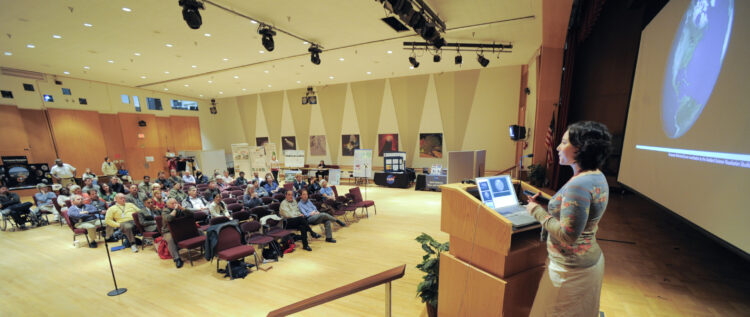“His palms are sweaty, knees weak, arms are heavy
There’s vomit on his sweater already, mom’s spaghetti
He’s nervous, but on the surface he looks calm and ready to drop bombs,
But he keeps on forgetting what he wrote down,
The whole crowd goes so loud
He opens his mouth, but the words won’t come out
He’s choking how, everybody’s joking now
The clock’s run out, time’s up, over, bloah!” – Eminem
I just finished giving a TEDx talk at Barnard College in NYC. During the process of researching, writing, practicing and finally performing my talk, I learned a ton of lessons. I gave talks before, but preparing for this one was different and challenging.
I was nervous. I have a saying that I go by: “If you are not at least a little nervous, then the opportunity may not be big enough.” I use that quote as motivation anytime I embark on something challenging. I felt out of my element, uncomfortable, like an impostor. And that’s a good thing.
Here are a few of the lessons that can help you on your next presentation or talk that I got from being out of my comfort zone.
Have a great, detailed story
Start with a story. You enhance your presentation 10x when there is a story involved. Stories also keeps the listener engaged, and from falling asleep. But, you just can’t go up in front of people with a basic “once upon a time.” You have to take people on a visual trip. For example:
When I was a boy, I loved to play video games.
or
When I was 12 years old, growing up in Newark, I stayed in the house and played video games all day.
One sentence is like watching TV, the other actually puts you inside the TV. What time was it? How old were you? What did it smell like? How did something feel? You don’t have to go overboard, but be specific enough to paint a picture.
The story can be a personal one, or from somewhere else, so long as it’s relevant to the main topic of the presentation. Every presentation has one central goal/idea/point and your story should support whatever that is. And that’s why you should…
Plan, plan and plan
When screenwriters put together a movie script, there are usually three parts: The setup, the confrontation and the resolution. You should definitely be planning your presentation with this in mind.
The setup: That’s the part we covered loosely with the story. But, the setup is also an opportunity to connect the story with whatever data you want to highlight.
The confrontation: This is the meat of the sandwich you are making. This could be the opportunity, the journey, the experiments, the challenge, etc.
The resolution: OK, how are you going to solve this problem? Or how DID you solve this problem already? What’s next? What did you discover? How does the story connect with your ending?
I have a post how on how to pitch your startup where I go over a “slide deck” outline. It’s mainly about raising money, but you can grab some good tips from it on general presenting. (view post)
Be funny, inspiring or emotional
Your listener needs to feel something. There are three major elements you can bring to a presentation: humor, emotion and motivation. Find out what your strongest element is, and bring that to the table. You can either have all three, two of three or just one. But you cannot — absolutely cannot — do a presentation without one of these.
Practice
This one should go without saying. Sometimes you are going to mess up when presenting, we are only human. But, you can only bounce back fast if you really know your material well. Practicing gives you the opportunity to get back on track if you mess up. It’s your insurance policy.
Using a slide deck? Try your best to remember the main points of every slide. Using very descriptive imagery can help when creating your deck. What if I’m not using a slide deck or won’t be able to see it? Then make sure you don’t wait until the last minute to practice or memorize. Use techniques like splitting your speech up into several small parts with a voice recorder (your phone should have an app for that).
Don’t get lazy at the end
Bring it home hard. This is the resolution part of your presentation. The part where you really drive home that emotion you want people to feel, or that central idea you want them to remember. One way to make sure that you don’t go soft at the end of your presentation is to work on this part FIRST. Make this the very first thing you work on so that it doesn’t feel like you ran out of steam.
I always admire the quote “To be great, study greatness.” This has been said by everyone from Nietzsche to Sen. Cory Booker to Tracey Morgan. Because watching the end of many great speeches and presentations is the best hack you can do. Borrow from the way many of the best speakers end their talks.
Image Credit: CC by NASA Goddard Space Flight Center




